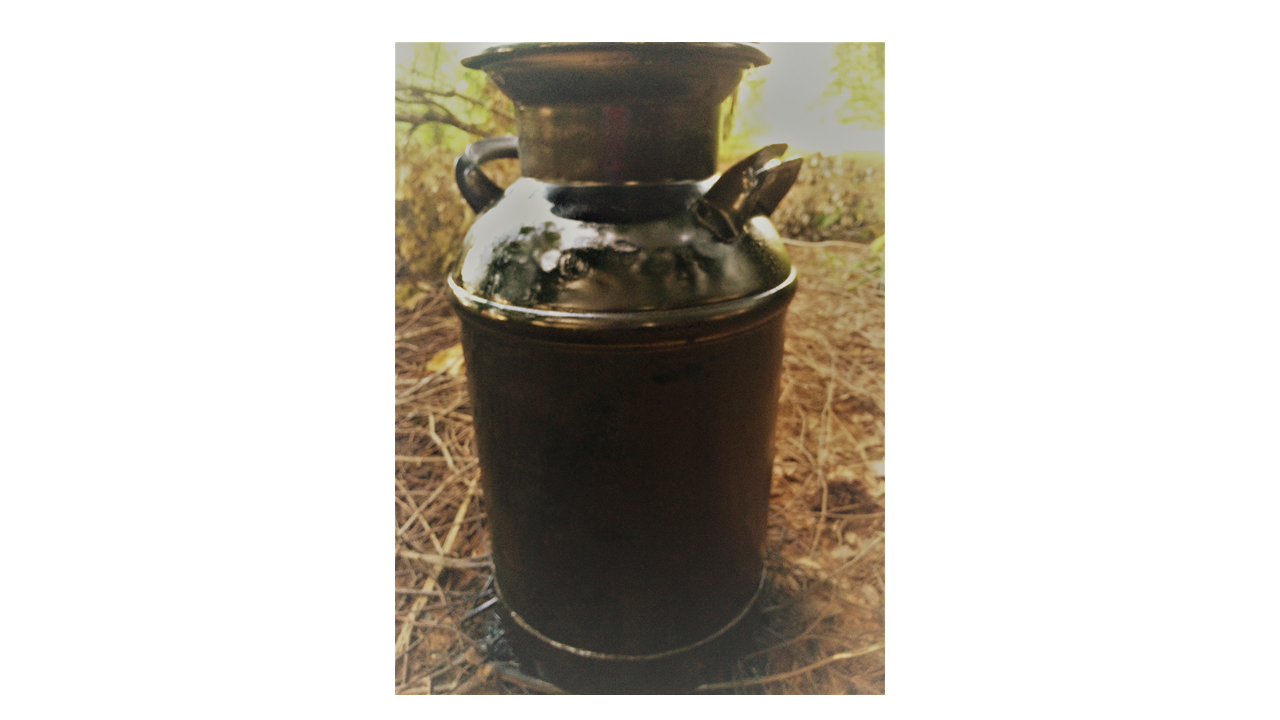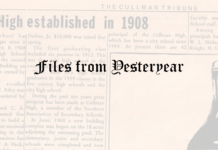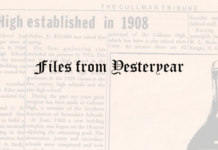This milk can was mistaken for a propane tank by a 25-year-old who had never seen or heard of a milk can.
CULLMAN – Ever think about the milkman with the starched white uniform who used to bring ice cold milk to your door? He used a wire basket to hold the glass bottles and always had a smile on his face. Or what about the guy who used to travel up and down city streets with pots and pans on a truck, and always sharpened the knives of housewives who met him at the curb to check out his latest inventory? He was called a peddler, and most teenagers, or even people in their 40s wouldn’t have any idea what you were talking about if you asked them about a milkman or a peddler.
Case in point: not long ago a young man in his 20s was overheard inquiring about a metal can that he picked up. “This is heavy,” he said in surprise. “What is it, some type of propane canister?”
The item to which he was referring was a metal milk can, used to haul milk from the farm to the dairy processors. These milk cans were cleaned and reused over and over again because plastic was not commonly used at the time. They have become highly collectable these days, as have many other things that were once commonplace on every farm and in households all over the United States.
Peinhardt Farm is one of the best places to view a wide variety of these vintage, antique and almost obsolete items. You might see things you recall being used on your grandparents’ farm, or in your grandmother’s kitchen, or things you haven’t a clue about. Here are some of the ones most common ones. How many can you identify without reading the descriptions? (See photos below!) If you are older than 60, don’t cheat and tell the young ‘uns!
Item 1:
You might see these at a cooperage, but for common use, you don't see them anymore unless it's at a keg party.
In bygone years, anything liquid and some other perishables were shipped in kegs. Once a common site on docks, railroad platforms and in general stores, they have been replaced with paper, plastic and cans.
Item 2:
In today's world, you might live a lifetime without ever seeing the items pictured here. They were once a fixture on every farm and in most homes in cities before sewers and water treatment plants took their place. The long cylinders were used for drilled wells, the buckets were used for wells that were hand dug, and the pulley, or windlass, was used to haul either of the containers from bottom to top with a rope attached to the bucket/cylinder at one end and the pulley at the other. It was a common chore for children to fetch water from the well.
Item 3:
Before plastic took over practically everything we use, glass vessels were used for any liquid and many other things, such as medicine, which often came in either cobalt or brown bottles. The milk bottles shown here were also a common sight on the porches and stoops of houses, especially in towns. Delivered by a milkman who wore white from head to heel, milk, butter, eggs and other dairy products were delivered each morning door-to-door.
Item 4:
These days old salt-glazed stoneware crocks like these are highly prized by collectors. They were used to hold syrup, vinegar and whiskey among other uses. They came in all sizes, some as large as 30 gallons, others as small as a pint.
Many homemakers used them to make pickles and sauerkraut, cure meats and preserve sausages and other foods from their gardens.
Item 5:
Clorox came in these brown bottles, which are also highly collectable today. At the time, most glass bottles were redeemable for a small deposit, especially soft drink bottles. Children often picked up bottles along the roads and made enough money on the return deposit to purchase another drink and maybe a couple of pieces of penny candy.
Item 6:
Blue Ball canning jars were found in every household, even if you didn't can, you purchased your foodstuffs in them. People saved them to drink from, or to reuse in canning another harvest. Now used for decorative purposes, they are getting hard to find, even in antique markets. The threaded zinc screw-on lid, which came with a rubber gasket (patented in 1858) was revolutionary when it first appeared on the Ball jar. It offered a greater seal for keeping food fresh longer, as well as keeping ants and other critters at bay.
Colored jars were thought to be safer for canned goods because they shielded the ingredients of the jars from some degree of light.
Some of the more collectable Ball or Mason jars have a raised number on them. These numbers can be used to determine an approximate date of manufacture. The big numbers on the bottom are actually mold numbers and cannot be used to date your jar. You can, however, get an approximate age from the logo.
Check out http://www.minnetrista.net/blog/2013/06/27/ball-family-history/how-to-date-a-ball-jar.
Item 7:
Pat Peinhardt points out the small freezer space once standard on refrigerators in their early days. The aluminum ice trays and very little else would fit into the freezer compartments. However, the appliances were so well-made that they are still running even after all these years! The first refrigerator was designed by William Cullen in 1755. By 1805, Oliver Evans had moved the design a little further, so that it would keep ice. Over the years, the design improved until, in 1913, refrigerators were introduced into the home. They were most often known as Kelvinators, instead of the term, “refrigerator” that we recognize today. Later, they were called Frigidaires, after the first man who mass produced them, but the first refrigerator to see widespread use was the GE model with a motor on top, in 1927. It would be years before separate freezer compartments were invented in the 40s. Chest-type free-standing freezers would not be mass-produced until after WWll.
Item 8:
Clothes irons have come a long way, baby! Some sources say that the Chinese were using irons made of metal as long as two centuries ago. The French are said to have used irons as early as the 12th century to press all of those ruffles they wore around their necks and wrists. Some irons were made of glass, wood or rocks. It wasn't until the American West was being settled that blacksmiths designed the iron “iron” shown here. Made of cast iron, they were heated on open flames, then used to press clothes. In later years, aluminum irons (bottom left) which were lighter, replaced most of the heavy iron ones.
Item 9:
This, boys and girls, is what your ancestors used as a suitcase! Yes, they packed their belongings inside these trunks, already heavy for being made of wood and leather, with everything they owned and headed west. Trunks were also called “steamer trunks” because they were used to ship passengers’ clothing when people were traveling back and forth from Europe on steam ships. Now highly collectable, they make good coffee tables, conversation pieces, storage vessels and great props for vintage-looking photographs.
Item 10:
Big cast iron pots like these, often referred to as “wash tubs,” had many uses, from cooking stews and making lye soap to boiling water for washing clothes. The clothes were placed in the pot, which was hung over burning wood or coals, then when considered clean, the steaming clothes were pulled out with a paddle, transferred to a pot of rinse water, then wrung out by hand and hung on a clothes line to dry. Wash day was a full day’s work for people with children. Often people had three or four long lines of clean clothes waving in the breeze, or freezing and covered with ice if it was wintertime.
Item 11:
Old-school wringer washing machines often hooked up to water hoses from outside, or by hose to the faucet of your sink. These monsters were said to have eaten the hands and arms of many a curious child! Clothes were agitated, often with the help of a long stick or paddle, then rinsed and pull/pushed through the wringer attachment on top of the machine. These wringer rollers squeezed the water out of the clothes allowing them to dry much faster than their predecessors, which were the strong arms of women and men who washed clothes in iron pots, then wrung them out by hand, a long, tedious and tiring process. Today we throw laundry in one machine, push a button, and like magic, the washer does the rest. Then, when it has finished one of its many cycles, we remove the wet clothes to a dryer and push another button. Wouldn't our ancestors be amazed???
Copyright 2017 Humble Roots, LLC. All Rights Reserved.






















